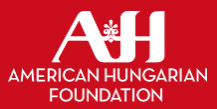Calvin Synod Herald, 1991 (91. évfolyam, 1-6. szám)
1991-01-01 / 1. szám
Fragments from Rev. Dr. Imre Bertalan’s address We are gathered here today to commemorate the first preaching of the Gospel in the Hungarian language in North America one hundred years ago. On this historic occasion, we also remember with deep gratitude that this first Hungarian worship service, which was also held on the west side of Cleveland, marked the beginning of a 100-year history. I consider it a great honor and privilege to be able to address you on this historic occasion. When searching for guiding thoughts, I was helped by the wording of the invitation which clearly defines the purpose of this assembly, namely to find strength in each other’s faith and confess the unity of the Hungarian Reformed family in the United States. The search for unity, in fact for organic union, is the one of the most compelling stories in the history of the Hungarian Reformed faith in America in the last 100 years. It began as early as July 4, 1896, at an assembly of pioneer pastors and elders in Trenton, New Jersey. We could have called this an ecumenical meeting for however small the number of representatives may have been, yet all congregations without exception were present. The main item on the agenda was to lay the pattern for the rapidly developing Hungarian Reformed presence in America.' The American Hungarian classis of all existing Reformed congregations was proclaimed. The decisive first step was taken for the formation of an autonomous church life to be established in the new country following the example of church life in Hungary. The second achievement was the creation of the Hungarian Reformed Federation in America. This charitable institution was organized by the same delegates who dealt with the formation of the Classis. The vision of the founding fathers regarding church life, namely the formation of the Hungarian Reformed Classis, was not shared by the Reformed Church in the United States, the denomination which was the first to assist the immigrants of Reformed persuasion from Hungary. As a matter of fact, it was blocked by an erroneous vision, namely “To evangelize the new immigrants”, which in other words represented an ecclesiastical version of the melting pot theory. In 1902, the Presbyterian Church started to organize Hungarian congregations and in 1904, the Reformed Church in Hungary began its concentrated work in America and instead of unity, the Hungarian Reformed people were affiliated to three different church bodies. This was the case from 1904 to 1918 — a period that was marred with severe infights, rivalries and litigations. At the end of World War I, the Reformed Church in Hungary folded up its American work and instructed the congregations to join a large American denomination. This decision only led to further fragmentation. In December 1924, the Free Magyar Reformed Church in America was organized under principle of a “Free Church in a Free State.” It proclaimed the program of a self-supporting church body without the help of any missionary subsidy from American denominations. The fragmentation was the most tragic in those years, yet the dream for unity continued to remain in the prayers of the faithful. In 1934, the Reformed Church in the United States united with the Evangelical Synod in North America and the Evangelical & Reformed Church came into being. In 1938, the constitution of a new denomination stated that: “The Hungarian congregations may organize a Magyar Synod.” No more demands were made for immediate assimilation. The Magyar Synod was born in 1939. Practically this meant that the Synod became an autonomy-minded entity within the E&R Church. In fact, the birth of the Magyar Synod revived the dream of uniting the Hungarian Reformed community. Books could be written on the history of union negotiations. The most promising development took place in 1962 when the Presbyterian Church USA offered a free affiliation, guaranteeing self-government and independence, thus uniting the Magyar Synod, the Hungarian Reformed Church in America and the Presbyterian congregations. The Basis of Union and the text of the Proposed Agreement constitute the greatest documents in the history of merger negotiations. This plan, however, did not materialize. In 1961, the United Church of Christ came into being by a merger of the Congregational Church and the Evangelical & Reformed Church. The new constitution gives autonomy to the local congregations even in matters of church property. For us it meant that the two major church bodies were free to take further steps toward church union. A positive step was taken in the right direction in 1976 by the Calvin Synod and the Hungarian Reformed Church in America when announcing a movement known as the Hungarian Reformed Church Uniting. A largescale cooperation started with the intention that cooperation would lead to union. “Faith of our Father! Living still...!” sing our 1st, 2nd, and 3rd generations in church. ‘We will be true to Thee till death.” As we sing these phrases, we realize that the unity of all Hungarian Reformed congregations has been an article of faith of our fathers. “Will it be continued?” The Lord of the Church addresses this question to us, to the Calvin Synod, to the Hungarian Reformed Federation of America and The Hungarian Reformed Church in America. Bolyai University Fund-Raiser Tom Lantos, a California congressman, who was instrumental in erecting Kossuth’s Bust in the Nation’s Capital on March 15, 1990, was in Cluj (Kolozsvár) Romania to hand out American Hungarian Human Rights Foundation’s medals. He used the occasion to announce the start of an international fund-raising drive for the benefit of the Bolyai University. A drive in local Hungarian churches and organizations seeks to raise money to establish and maintain an orphanage in Marosvásárhely, Transylvania.
